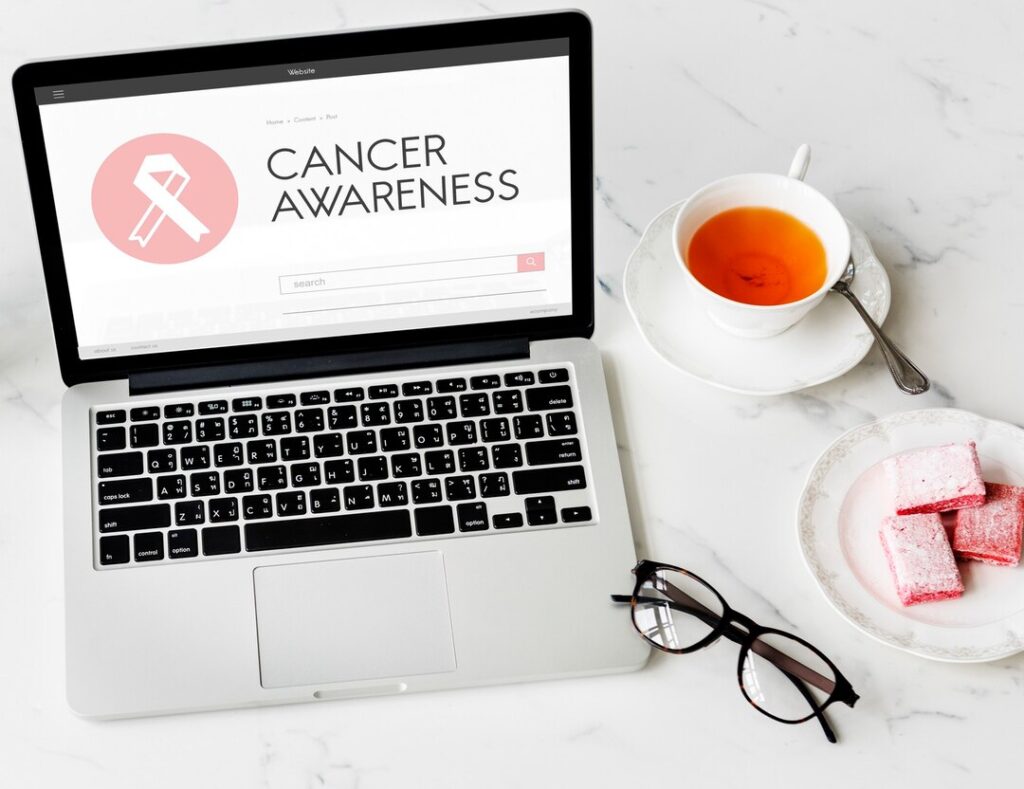Ovarian cancer is a malicious disease that affects thousands of women each year. Often referred to as the “silent killer,” ovarian cancer can go unnoticed until it has advanced to later stages, making it more difficult to treat. Despite being one of the most deadly types of cancer among women, ovarian cancer is also one of the least understood and discussed. In this article, we aim to shed light on this devastating disease, from its causes and risk factors, to its symptoms and treatments. We will also provide tips on how to reduce your risk and what to look out for if you suspect you may have ovarian cancer. But before we dive into the details, let’s take a moment to reflect on the impact this disease has on women and their families.
Ovarian cancer not only takes a physical toll on the body, but also an emotional and financial one. Women who are diagnosed with ovarian cancer often face a long and difficult road to recovery, including surgery, chemotherapy, and other treatments. They may also struggle with the emotional fallout of their diagnosis, such as fear, anxiety, and depression. To make matters worse, ovarian cancer often goes undetected until it has progressed to later stages, making it more difficult to treat.
However, there is hope. With early detection, prompt treatment, and ongoing support, women can successfully fight and beat ovarian cancer. By educating ourselves and those around us, we can increase awareness of this disease and help save lives. So, join us on this journey as we explore the world of ovarian cancer, and discover what you can do to protect yourself and your loved ones.
Definition
Ovarian cancer refers to a type of cancer that starts in the ovaries, two small, almond-shaped organs located in the female reproductive system. The ovaries are responsible for producing eggs and producing hormones such as estrogen and progesterone. Ovarian cancer can occur in any part of the ovary, including the outer layer (epithelial cells), the supportive tissue (stromal cells), or the germ cells that produce eggs.
Types of Ovarian Cancer
There are several types of ovarian cancer, including:
- Epithelial Ovarian Cancer: This type of ovarian cancer starts in the cells that form the outer layer of the ovary, called the epithelial cells. It is the most common type of ovarian cancer and accounts for about 90% of all cases.
- Germ Cell Ovarian Cancer: Germ cell ovarian cancer starts in the cells that produce eggs. It is a less common type of ovarian cancer and is typically found in younger women.
- Stromal Cell Ovarian Cancer: Stromal cell ovarian cancer starts in the cells that provide structural support to the ovary and produce hormones. This type of ovarian cancer is also less common and can be more difficult to diagnose.
- Ovarian Low Malignant Potential Tumor (OLMPT): OLMPT is a type of ovarian tumor that is not cancerous but has the potential to become cancerous. It is usually found in younger women and is usually benign.
It’s important to note that the type of ovarian cancer a woman has can impact her treatment options and prognosis.
Prevalence of Ovarian Cancer
Ovarian cancer is a serious According to the World Health Organization (WHO), ovarian cancer is the eighth most common cancer among women and the fifth leading cause of cancer-related deaths in women.
In the United States, an estimated 22,830 women will be diagnosed with ovarian cancer in 2023, and approximately 14,000 women will die from the disease. Ovarian cancer is more common in women over the age of 50, but it can occur at any age.
It’s estimated that 1 in 78 women will develop ovarian cancer in their lifetime. The risk of developing ovarian cancer increases with age, with the highest incidence occurring in women over the age of 60. Other factors that can increase the risk of developing ovarian cancer include family history of ovarian or breast cancer, use of fertility drugs, and never giving birth.
Causes and Risk Factors
Ovarian cancer can be caused by a combination of genetic, hormonal, lifestyle, and environmental factors. Understanding the causes and risk factors for ovarian cancer can help women reduce their risk of developing the disease and increase their chances of early detection and effective treatment.
A. Heredity and Genetics
Heredity and genetics play a significant role in the development of ovarian cancer. Women who have a family history of ovarian or breast cancer are at an increased risk of developing ovarian cancer. In particular, women who have a mother, sister, or daughter with ovarian cancer are at higher risk. Additionally, women who carry certain genetic mutations, such as BRCA1 or BRCA2, are at an increased risk of developing ovarian cancer.
B. Hormonal and Reproductive Factors
Hormonal and reproductive factors can also increase a woman’s risk of developing ovarian cancer. Women who have never given birth or who have given birth to fewer than two children are at an increased risk. Women who started their menstrual periods at an early age or who went through menopause at a later age are also at an increased risk. Women who have used fertility drugs or who have undergone infertility treatments are also at an increased risk.
C. Lifestyle and Environmental Factors
Lifestyle and environmental factors can also play a role in the development of ovarian cancer. Women who are overweight or obese are at an increased risk, as are women who have used hormone replacement therapy for an extended period of time. Additionally, women who smoke or who have a history of exposure to certain chemicals, such as talc or pesticides, may be at an increased risk of developing ovarian cancer.
Symptoms and Diagnosis
A. Common Symptoms of Ovarian Cancer
- Abdominal bloating or swelling: Women with ovarian cancer may experience a feeling of fullness or pressure in their abdomen, even after eating only a small amount of food. This bloating or swelling can cause clothing to fit tighter around the waist and can persist for several days.
- Pelvic pain: Ovarian cancer can cause persistent and worsening pelvic pain, particularly on one side of the body. Women may experience a dull ache or sharp pain that lasts for several days.
- Urinary frequency or urgency: Women with ovarian cancer may experience an increased need to urinate or have difficulty holding their bladder. This can be due to the pressure that ovarian cancer can place on the bladder.
- Difficulty eating or feeling full quickly: Ovarian cancer can cause women to feel full quickly when they eat, even after only a small amount of food. This can lead to weight loss and decreased appetite.
- Fatigue: Ovarian cancer can cause women to feel tired and worn out, even after getting enough sleep. This can be due to the body’s effort to fight the cancer, as well as the effects of the cancer on the body’s energy levels.
- Upset stomach or heartburn: Ovarian cancer can cause digestive symptoms, such as nausea, vomiting, and heartburn. This can be due to the pressure that the cancer places on the digestive organs.
- Back pain: Ovarian cancer can cause back pain, particularly in the lower back, as the cancer grows and places pressure on the muscles and nerves in the back.
- Constipation: Ovarian cancer can cause digestive problems, including constipation, as the cancer places pressure on the digestive organs.
B. Diagnostic Tests for Ovarian Cancer
Diagnosing ovarian cancer requires a combination of clinical exams and diagnostic tests, including:
- Pelvic Exam: A pelvic exam is a routine exam performed by a healthcare provider to evaluate the health of the reproductive organs. During a pelvic exam, the healthcare provider will examine the ovaries, uterus, and cervix for any signs of abnormality.
- Transvaginal Ultrasound: A transvaginal ultrasound is a diagnostic test that uses high-frequency sound waves to create images of the reproductive organs. This test can help identify any abnormal growths or masses in the ovaries.
- CA-125 Blood Test: The CA-125 blood test measures the levels of the CA-125 protein in the blood. Elevated levels of CA-125 can indicate the presence of ovarian cancer. However, it is important to note that other conditions, such as endometriosis or uterine fibroids, can also cause elevated CA-125 levels.
- CT Scan: A CT scan is a diagnostic test that uses X-rays and a computer to create detailed images of the body’s internal organs. CT scans can help identify any abnormal growths or masses in the ovaries and help determine the stage of the cancer.
- MRI: An MRI is a diagnostic test that uses powerful magnets and radio waves to create detailed images of the body’s internal organs. MRI scans can help identify any abnormal growths or masses in the ovaries and help determine the stage of the cancer.
- Biopsy: A biopsy is a diagnostic test in which a sample of tissue is taken from an ovarian growth or mass and examined under a microscope. Biopsies are typically performed in conjunction with other diagnostic tests to help confirm a diagnosis of ovarian cancer.
Importance of Early Detection
Early detection and treatment of ovarian cancer is crucial for improving outcomes and reducing the risk of death from this disease. Ovarian cancer is often referred to as the “silent killer” because its symptoms are often subtle and easily mistaken for other less serious conditions. This, combined with the fact that ovarian cancer often goes undetected until it has progressed to later stages, makes early detection even more important.
When ovarian cancer is detected and treated in its early stages, the chances of survival are much higher. In fact, the five-year survival rate for women with early-stage ovarian cancer is over 90%. However, when ovarian cancer is not detected until later stages, the five-year survival rate drops to less than 30%.
Treatment Options
Overview of Treatment Options for Ovarian Cancer
- Treatment options for ovarian cancer vary depending on the stage and type of cancer, as well as the woman’s age, overall health, and personal preferences.
- The main goals of treatment are to remove as much of the cancer as possible, destroy any remaining cancer cells, and prevent the cancer from recurring.
- Treatment options for ovarian cancer may include surgery, chemotherapy, radiation therapy, and other innovative treatments
-
Surgical Options
- Debulking surgery: This is a type of surgery that removes as much of the cancer as possible, including the cancerous ovary or ovaries, the uterus, and other surrounding tissue, such as the fallopian tubes and pelvic lymph nodes.
- Staging surgery: This is a type of surgery that is performed to determine the stage of the cancer and to remove as much of the cancer as possible. This may include a biopsy of the cancerous tissue and the removal of the cancerous ovary or ovaries, uterus, fallopian tubes, and other surrounding tissue, such as the pelvic lymph nodes.
- Cytoreduction surgery: This is a type of surgery that is performed to remove as much of the cancer as possible, including the cancerous ovary or ovaries, uterus, fallopian tubes, and other surrounding tissue, such as the pelvic lymph nodes.
Chemotherapy and Radiation Therapy

- Chemotherapy: Chemotherapy is a type of cancer treatment that uses drugs to destroy cancer cells. Chemotherapy can be given in pill form or through an IV and is typically administered in cycles, with rest periods in between to allow the body to recover.
- Radiation therapy: Radiation therapy is a type of cancer treatment that uses high-energy rays to destroy cancer cells. Radiation therapy can be delivered externally, using a machine outside the body, or internally, using a radioactive source inside the body.
Clinical Trials and Innovative Treatments
- Clinical trials: Clinical trials are research studies that evaluate the safety and effectiveness of new treatments for cancer. Women with ovarian cancer may be eligible to participate in clinical trials, which can offer access to cutting-edge treatments that are not yet widely available.
- Innovative treatments: Innovative treatments for ovarian cancer are being developed and studied all the time. This may include new drugs, new combinations of drugs, new surgical techniques, new radiation therapy techniques, and other treatments that are designed to improve the treatment of ovarian cancer and help women achieve the best possible outcomes.
Lifestyle Changes to Reduce Risk
- Maintaining a healthy weight: Women who are overweight or obese have a higher risk of developing ovarian cancer, so maintaining a healthy weight through a balanced diet and regular exercise can help reduce this risk.
- Limiting hormone replacement therapy (HRT): Women who use HRT for long periods of time have a higher risk of developing ovarian cancer, so limiting HRT or using it for the shortest possible time can help reduce this risk.
- Avoiding tobacco and excessive alcohol consumption: Both smoking and excessive alcohol consumption have been linked to an increased risk of ovarian cancer, so avoiding these habits can help reduce the risk of developing this disease.
VI. Coping with the Physical and Emotional Effects of Ovarian Cancer
Ovarian cancer can be a challenging and stressful experience, both physically and emotionally. However, there are a number of strategies that women can use to cope with the effects of this disease.
A. Physical Effects of Ovarian Cancer
- Pain management: Ovarian cancer can cause discomfort and pain, especially in the abdominal area. Pain management techniques such as using a heating pad or taking over-the-counter pain medications can help relieve discomfort and improve quality of life.
- Fatigue management: Ovarian cancer treatment can cause fatigue, which can be debilitating and affect daily activities. It’s important to listen to your body and take breaks when needed, and engage in gentle physical activity to help manage fatigue.
B. Emotional Effects of Ovarian Cancer
- Talking to a therapist or support group: Ovarian cancer can be a challenging and emotional experience, and talking to a therapist or support group can help women cope with their feelings and emotions.
- Practicing self-care: Taking care of yourself through activities such as exercise, meditation, and spending time with loved ones can help improve your overall well-being and boost your emotional resilience.
- Seeking support from loved ones: Having support from friends and family can be a vital source of comfort and help during the journey of ovarian cancer.
It’s important to remember that every woman’s experience with ovarian cancer is unique, and there is no right or wrong way to cope with the physical and emotional effects of this disease. It’s okay to ask for help and to take steps to manage the physical and emotional symptoms as they arise. With the right support, women can navigate this journey and reclaim their lives after a diagnosis of ovarian cancer.
There are a variety of treatment options available for ovarian cancer, and it’s important for women to work closely with their healthcare provider to determine the best course of action. Lifestyle changes, such as maintaining a healthy diet, reducing stress, and engaging in physical activity, can also help reduce the risk of ovarian cancer.
For women who are currently living with ovarian cancer, it’s important to remember that they are not alone. There is a strong community of women who have faced similar experiences and there are a number of resources and support groups available to help women cope with the physical and emotional effects of this disease. With the right support and care, women can overcome ovarian cancer and reclaim their lives.

























Recent Comments